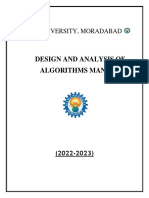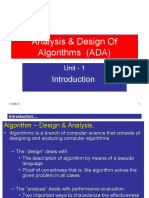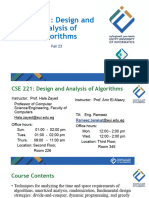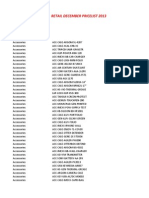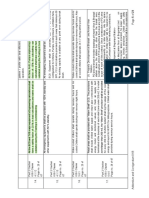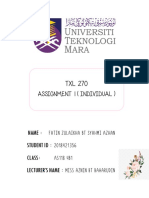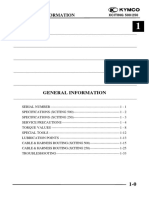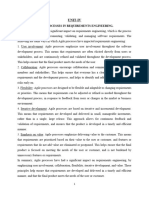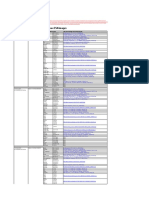0% found this document useful (0 votes)
13 views19 pagesDAA Introduction
The document outlines the importance of the Design and Analysis of Algorithms (DAA) course in computer science, emphasizing its role in developing efficient software systems. It covers various algorithm design techniques, performance analysis, and the need for algorithms in problem-solving. The syllabus includes topics such as divide and conquer, dynamic programming, and complexity theory, along with course objectives and evaluation schemes.
Uploaded by
yprudvee87Copyright
© © All Rights Reserved
We take content rights seriously. If you suspect this is your content, claim it here.
Available Formats
Download as PDF, TXT or read online on Scribd
0% found this document useful (0 votes)
13 views19 pagesDAA Introduction
The document outlines the importance of the Design and Analysis of Algorithms (DAA) course in computer science, emphasizing its role in developing efficient software systems. It covers various algorithm design techniques, performance analysis, and the need for algorithms in problem-solving. The syllabus includes topics such as divide and conquer, dynamic programming, and complexity theory, along with course objectives and evaluation schemes.
Uploaded by
yprudvee87Copyright
© © All Rights Reserved
We take content rights seriously. If you suspect this is your content, claim it here.
Available Formats
Download as PDF, TXT or read online on Scribd
/ 19




















